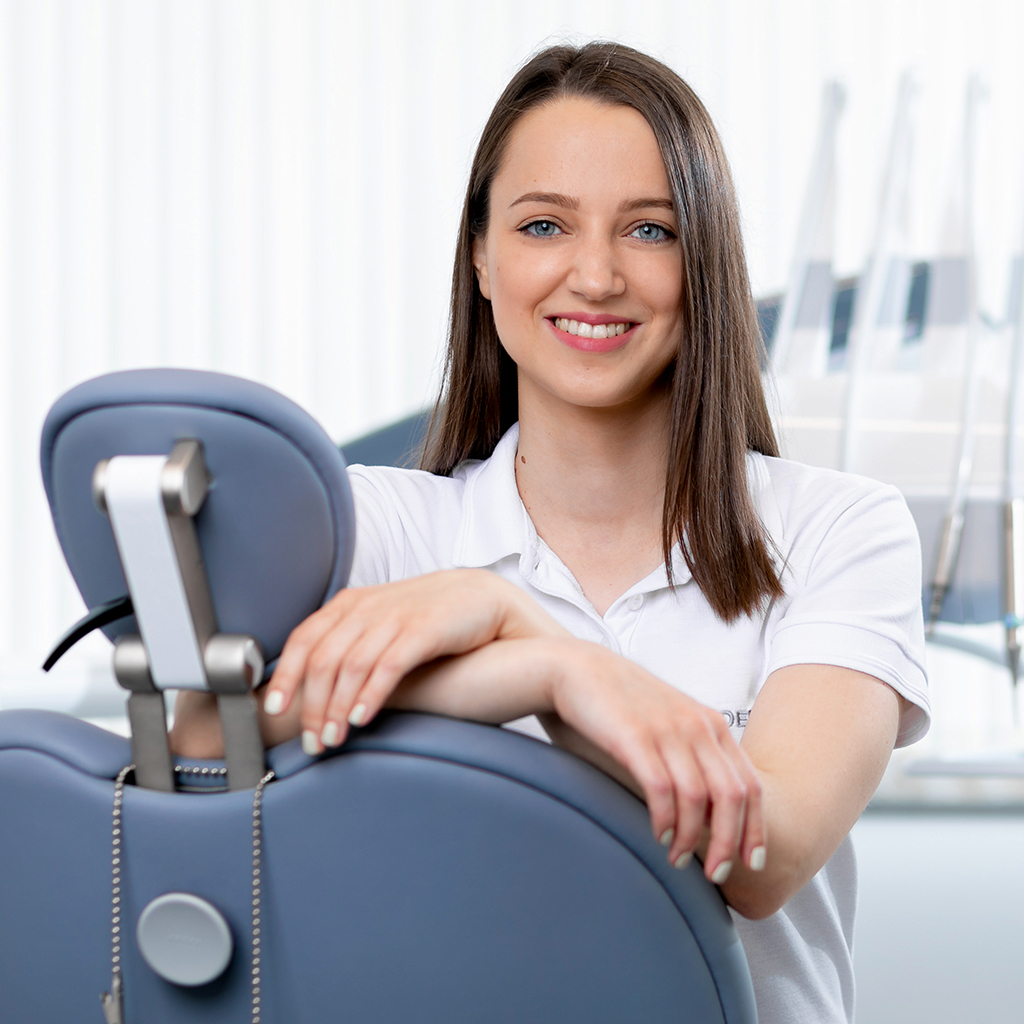

Although most adults choose orthodontic treatment primarily for aesthetic reasons, a beautiful smile is just one of the benefits of correcting teeth at any age.
With the help of orthodontic treatment—which involves correcting both aesthetic and functional irregularities in the position of teeth and dental arches—it is possible to address a range of issues, such as misaligned bites or gaps between teeth. These issues can affect gum health, and correcting them makes it easier to maintain healthy teeth for a longer time.
Who should wear braces?
Braces are recommended for anyone who is unhappy with the position of their teeth and wants to achieve a new smile with a minimally invasive approach. Orthodontic treatment is suitable for all age groups.
In addition to creating an attractive smile that boosts self-confidence, orthodontic treatment aligns the teeth properly, making it easier to maintain oral hygiene and clean between teeth. This helps reduce the risk of cavities and gum disease.
Additionally, when teeth are properly aligned, the risk of uneven wear is reduced. Orthodontic treatment can also correct certain speech and chewing issues, and sometimes even problems in the jaw joint.
Similarly, an increasing number of adult patients are choosing orthodontic treatment to create a solid foundation for future prosthetic or implant-based restorations.
How long does one wear braces?
The duration of wearing braces is truly individual and does not depend on the patient’s age, but on the complexity of the orthodontic issue.
Treatment usually lasts from one to two years, although it can sometimes be shorter or longer.
Which types of braces are recommended for adults?
The most common types of braces today are fixed braces and clear aligners. In some cases, both techniques are combined in a single treatment, which is referred to as hybrid orthodontics.
Fixed braces consist of brackets and archwires connected with thin wires or elastic bands. The brackets can be either clear (monocrystalline ceramic) or metal. Adult patients most often choose monocrystalline ceramic brackets for their aesthetic appeal.
Clear aligners are removable orthodontic devices made up of a set of transparent trays that the patient can put in and take out themselves.
When choosing a type of braces for adults, several factors are considered, ranging from the severity of the orthodontic issue to the patient’s preferences. For adult patients, it is often very important that the braces are as discreet as possible, so they usually opt for clear aligners if the treatment indications allow.
Is any preparation needed before getting braces?
Before starting orthodontic treatment, any existing cavities, periapical issues (inflammation at the tip of the tooth root), or similar problems should be
treated. A healthy periodontium is especially important, so it is recommended to remove any tartar before getting braces, if present.
Can I wear fixed braces if I have a dental implant?
A dental implant is not a contraindication for fixed braces, so you can wear them.
What does the process of installing fixed braces look like?
The procedure takes about 15 minutes and is completely painless. It involves attaching the brackets and archwires to the teeth.
Will fixed braces damage my teeth?
Braces will not damage your teeth, whether they are fixed braces or clear aligners. Brackets are attached to the tooth surface using an orthodontic light-cured adhesive, which is polished at the end of treatment without any effect on the tooth enamel.
Does wearing braces hurt?
Wearing braces can sometimes cause minor irritation or discomfort; however, this is temporary, and your orthodontist will provide advice on how to minimize it.
How to care for your braces’ hygiene?
Maintaining good oral hygiene while wearing braces is extremely important. Ideally, you should brush your teeth after every meal. In addition to a toothbrush and toothpaste, you will need to use other oral hygiene tools, such as dental floss and interdental brushes.
If you have fixed braces, extra care is needed to thoroughly clean around the brackets. A water flosser can be very helpful for this.
If you are undergoing treatment with clear aligners, cleaning them is very simple—just use cold water and a toothbrush.
Do I need to be careful about what and how I eat while wearing fixed braces?
Your diet will need some adjustment during treatment with fixed braces. You should avoid biting into hard or chewy foods with your front teeth to prevent damaging parts of the braces. It is recommended to cut food into smaller pieces and chew with your back teeth.
What can I do to achieve the best possible results from my treatment?
To ensure the best possible results from orthodontic treatment, patient cooperation is essential, including attending regular check ups and maintaining good oral hygiene. Patient compliance is especially important when using clear aligners, as they must be worn full-time. The only exceptions are when eating or brushing your teeth.
What happens after I get my braces removed?
After your braces are removed, you will receive a retainer. A retainer is a clear tray worn at night to maintain the results of your orthodontic treatment.For the first year after treatment, it is recommended to wear the retainer every night. After that, during regular check-ups—typically every six months—your orthodontist will determine when it is appropriate to reduce the frequency of retainer use.
Iva Tuškan, DMD
Source: meddox.com